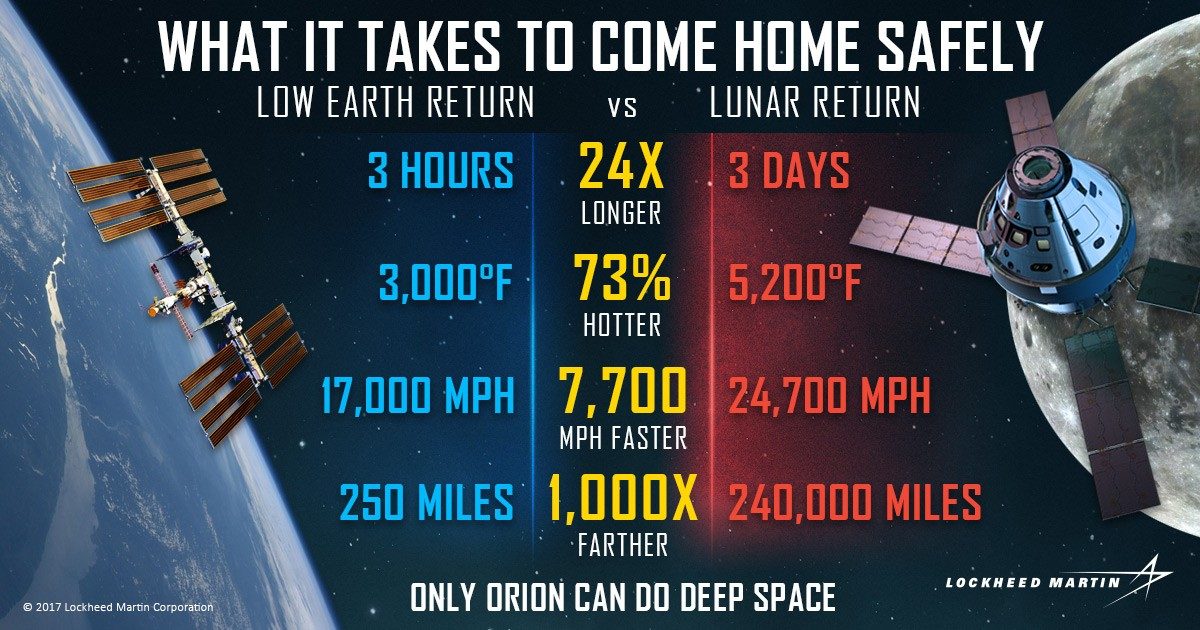It's the mid-2020s. A crew of astronauts are secured in their seats inside Orion, eagerly awaiting the launch countdown to begin. It’s the spacecraft’s first crewed mission – heading beyond the moon.
Behind this snapshot in time is years of ingenuity and preparation. All in the name of figuring out how to ultimately do something we’ve never done before: send humans to Mars.
While we haven’t yet arrived at the moment when we send humans beyond the Moon, prep is already underway. Lockheed Martin is pushing the envelope for crew safety early in the game – years before a crew even sets foot in Orion.
Take a look at three ways Lockheed Martin is already ensuring Orion will bring astronauts home safely.
Every time.
The environment of space is harsh – if you’re an astronaut, it’s trying to kill you at any given moment. (Just think of Mark Watney!)
In space, you have to plan for the most extreme scenarios, because they can and will happen. That’s why Lockheed Martin spends thousands of hours designing, testing, and tweaking Orion systems until they’re just right.
Without question, the two parts of spaceflight toughest on the human body are launch and landing. Astronauts will be subjected to extreme forces as they launch with Orion on the top of the Space Launch System rocket – which will be the world’s most powerful and produce 8.8 million pounds of thrust – not to mention intense vibrations for the spacecraft and its crew.
Lockheed Martin is pursuing even the smallest ways to make launch and landing safer for astronauts – everything from shock absorption on seats to ensuring the crew can read their screens during liftoff. Yes, that’s the level of detail our engineers are focused on.
In space, your backups must have backups.
Even if you’re prepared for any situation, anything can happen on a space mission. If an unexpected issue occurs and endangers the astronauts during launch or on the pad, the Launch Abort System will ignite within the blink of an eye to pull the capsule – and its crew – safely away from the rocket.
The rocket motor (seen in the above video) is capable of generating a whopping 400,000 pounds of thrust in one-eighth of a second – more than five F-22 fighter jets on full afterburner combined and enough to lift over 26 elephants. Ten times the force of gravity pushes on everything inside the capsule, because the system is capable of accelerating 400-500 mph away from the danger in a mere two seconds.
This is the crew’s last line of defense, it is the quickest and most reliable way to get astronauts to safety.

In 2014, Orion’s Exploration Flight Test-1 (EFT-1) launched the capsule into two orbits around Earth, before it came in for a splashdown in the Pacific Ocean. In 2019, we’ll take it one step further, beyond the moon.
The farther away you go in space, the more challenging the return to Earth. Coming back from the moon's vicinity will take at least three days compared to just three hours returning from low-Earth orbit. Now, consider the 6-9 month journey to Mars.
When distance increases, return speed skyrockets and the temperature upon re-entering Earth’s atmosphere dramatically increases. That’s why Lockheed Martin has designed and tested Orion’s heat shield to the extremes – subjecting it to the 5,200 degrees it will see as it rips through the atmosphere at 24,700 mph.
As humans, we’re naturally driven to explore the unknown, and Orion will help us do just that. As we continue to explore and push the exploration boundaries of our universe, Lockheed Martin will ensure the safety of those brave enough to go where no one has gone before.




